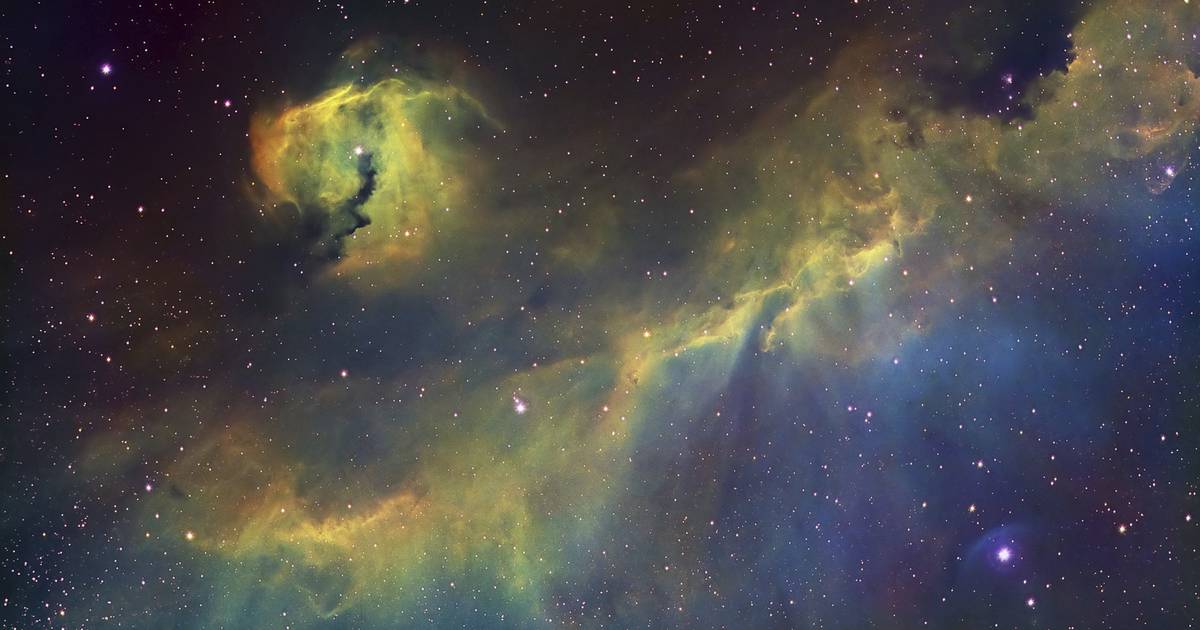[ad_1]
Growing up in Orland Park near Homer Glen, Jasonn Pellegrini was always fascinated by the idea of space exploration.
“When you’re a kid, everyone wants to be an astronaut or something like that, and my parents bought me a telescope,” Pellegrini said. “It wasn’t a fancy, expensive one. It was your generic department store one, but it allowed me to see the moon and Jupiter and its moons. It hooked me.”
Now 45 years old and living in Lemont, Pellegrini maintained that passion for astronomy. When the pandemic started, he found himself with more time on his hands. So, with some landscape photography under his belt and a degree in graphic design, he bought some equipment to mix his interests by taking photos of the night sky.
He tried it, enjoyed it and realized he could see a lot more of what’s in the sky after working to combat light pollution.
“I wish more people would be concerned about light pollution,” Pellegrini said. “It doesn’t just affect us as hobbyists; it affects real science.”
:quality(70)/cloudfront-us-east-1.images.arcpublishing.com/tronc/U5WXSWMVYJATTMBDKZX37EIRDQ.jpg)
Pellegrini uses a telescope, tracker, camera, lenses, filters to cut light pollution, mounts and computer software to capture and create images of the moon, sun, planets, asteroids, stars and galaxies. His favorite things to capture through astrophotography are nebulae, or space clouds.
Pellegrini said he would love to shoot more galaxies, but light pollution makes a much bigger difference with those and equipment can be much more expensive. A photographer can get “beautiful pictures” of the Milky Way with a camera, lens and a simple tracker that costs a couple hundred dollars, Pellegrini said. While there is a big market for used equipment, astrophotography definitely comes at a cost.
“It’s not cheap,” Pellegrini said. “It’s a level of how far you want to get into it. It really ranges. … If you want to go all out, you can spend $10,000, $15,000, $20,000, plus more. There’s telescopes out there that cost $60,000.”
Time is also a big investment. Many of Pellegrini’s images require hours — sometimes the bulk of an evening — to capture. He takes multiple exposures that are 3-5 minutes long, and then stacks them for greater detail. While he sometimes experiments when surprised by something interesting, most of his work takes careful planning. Pellegrini also has spent a lot of time checking forums, posts, websites and online videos to educate himself about astrophotography techniques, and looks to astronomy clubs and groups for even more help.
“It’s definitely a process to learn it,” Pellegrini said. “I don’t know if you ever really stop, because there’s always new things coming out and you’re always trying to tweak things to make things better.”
Most of Pellegrini’s images are captured out of his backyard in Lemont. He also made the pilgrimage to the annual Nebraska Star Party near Valentine, Nebraska, for the renowned dark skies there.
“The sky is just amazing to see with your own eyes,” he said. “The Milky Way will cast a shadow — it’s that dark there.”
:quality(70)/cloudfront-us-east-1.images.arcpublishing.com/tronc/DEJ5WNHENZC2TEOP4TPJ2LYUFA.jpg)
Astrophotography from dark sky areas such as the Nebraska Star Party is “vastly different,” Pellegrini said.
“It’s not necessarily the quality; it’s the time,” he said. “What would take you a half-hour there will take you 8 hours here. There are some things you really can’t photograph around here.”
Among those things are dark nebulae, essentially dust clouds that are not lit, requiring the photographer to block out the light behind them.
“It’s basically impossible to get around here,” he said. “It’s just not dark enough for that.”
Light pollution is one of the biggest problems Pellegrini faces in astrophotography. He occasionally picks a target that ends up being too dim to get data. And dealing with so much technology can present its own set of problems.
“Every once in a while you get a night that stuff just don’t want to run,” Pellegrini said. “Your telescope doesn’t want to run right, your mount doesn’t want to track. There’s a gazillion things that can go wrong.”
But he has honed his process for a 70-75% success rate.
Daily Southtown
Twice-weekly
News updates from the south suburbs delivered every Monday and Wednesday
“As you get more versed in what you’re doing, you become more successful more often,” he said.
:quality(70)/cloudfront-us-east-1.images.arcpublishing.com/tronc/E4Z7IX5VBFEK5IFD6ODGBUVQWI.jpg)
Pellegrini recently presented his work and methods to a capacity crowd at the Homer Township Public Library through a partnership with the Lemont Artists Guild. Lynn Rozycki, vice president of the Guild, said she learned about Pellegrini’s work by word-of-mouth and was amazed by what he could do.
“It’s just awesome,” she said. “You don’t see that much work with that quality and detail.”
Pellegrini said some people in the Chicago area don’t even realize how much sky detail they are missing. He encourages everyone to get out somewhere without so much light pollution — it doesn’t have to be Nebraska — and look up. He also suggests pointing lights down at home and making sure to turn them off at night when not needed to reduce some of the pollution.
“You don’t know until you go someplace like Nebraska what you’re missing, what’s lost in these areas,” he said. “I think people need to see that with their own eyes at least once in their life.”
Pellegrini said he hopes to start selling prints of his work at some point. For now, people can see his images along with the technical aspects of what he does on AstroBin under the user named Starlancer, via Instagram @starlancerastro and through ArtPal under jpastro.
Bill Jones is a freelance reporter for the Daily Southtown.
[ad_2]
